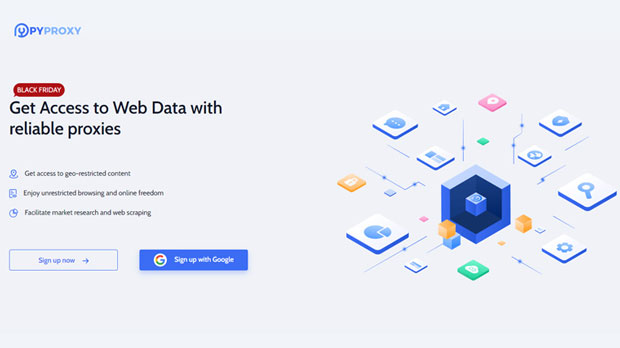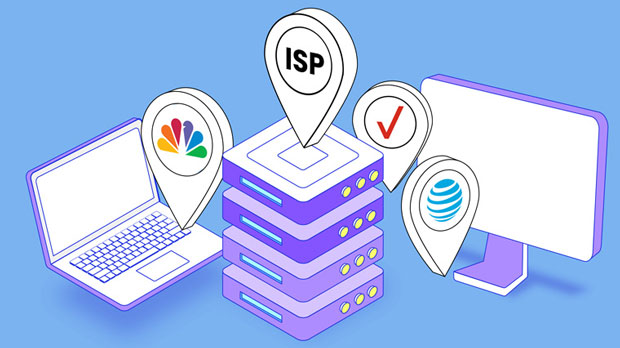Does Business Proxies offer customization? What are the customization differences with PyProxy?
When it comes to proxy services, customization plays a significant role in ensuring businesses meet their unique operational needs. Business Proxies and PYPROXY are two popular options in the market, and both offer varying degrees of customization to cater to diverse user requirements. Business Proxies typically provide tailored solutions based on the client’s specific use case, be it for data scraping, security, or market research. PyProxy, on the other hand, also provides customization but with a focus on flexibility and user-specific adjustments. This article will explore the extent of customization offered by both services and highlight the key differences that potential customers should consider when choosing between them. What is Customization in Proxy Services?Customization in proxy services refers to the ability to modify proxy configurations to align with a client’s specific needs. This can include aspects such as IP rotation, geolocation targeting, bandwidth control, authentication options, or even the type of proxies (residential, datacenter, mobile). The level of customization offered often determines how well a proxy service can fit into the client's business model, ensuring seamless integration and optimized performance.For businesses that rely on proxies for large-scale operations, like web scraping, online market research, or ad verification, customization is critical. Having tailored settings ensures higher success rates, lower risks of detection, and better efficiency in data collection and processing.Does Business Proxies Provide Customization Services?Business Proxies prides itself on offering a highly customizable proxy service, catering to businesses with specialized needs. The service allows clients to choose from different types of proxies, such as residential proxies, rotating proxies, and even custom-built solutions designed for specific use cases. Here are some of the key customization options offered by Business Proxies:1. IP Rotation Customization Business Proxies offers flexible IP rotation mechanisms, enabling clients to set the frequency and conditions under which their IPs rotate. This is especially beneficial for clients engaged in activities like data scraping, where frequent IP rotation is essential to avoid detection and blocking.2. Geolocation Customization Clients can choose proxies based on specific geographic locations, making it possible to target audiences in different regions. This is particularly useful for businesses that require regional data or need to perform location-based testing.3. Bandwidth and Speed Adjustments Business Proxies provides control over bandwidth allocation, allowing clients to optimize their proxies according to the speed requirements of their tasks. This is useful for data-intensive operations, such as bulk data scraping or high-speed transactions.4. Authentication and Security Features Customization also extends to the level of security and authentication options. Clients can request advanced authentication methods, including IP whitelisting, user-agent rotation, and encrypted traffic, ensuring their activities are secure and anonymous.What About PyProxy's Customization Features?PyProxy, while similar to Business Proxies in offering proxy solutions, tends to place a greater emphasis on providing flexible, user-friendly customization options. Its focus is on offering a more streamlined and adaptable service for businesses that require quick setup and simple integration. Below are the major customization features provided by PyProxy:1. User-Specific Proxy Adjustments PyProxy allows users to fine-tune their proxies by adjusting settings such as request headers, IP rotation speed, and geographical distribution. While Business Proxies provides detailed control, PyProxy’s approach is more centered on simplicity, making it ideal for users who need basic, yet effective proxy management.2. Rotating Proxy Options Similar to Business Proxies, PyProxy offers rotating proxies, but the level of rotation customization is more user-driven. Clients can easily adjust the frequency of IP rotations, but there is less focus on advanced rotation algorithms compared to Business Proxies, which can provide more granular control.3. Proxy Types While PyProxy does offer residential and datacenter proxies, its customization features for specific proxy types are somewhat less flexible. Clients looking for specific proxy types for specialized use cases (like mobile proxies) may find Business Proxies more accommodating.4. Geo-targeting and Locations PyProxy supports geo-targeting but limits the range of available locations compared to Business Proxies. Businesses with niche geographic needs may find Business Proxies more suitable, as it offers a broader selection of locations for proxy deployment.Key Differences Between Business Proxies and PyProxy’s CustomizationDespite both services offering customization features, there are clear distinctions between Business Proxies and PyProxy that could influence a business’s decision. 1. Customization Depth and Flexibility Business Proxies generally provides more in-depth customization, especially for businesses requiring advanced proxy configurations. For instance, the ability to tailor IP rotation frequency, authentication methods, and geolocation is more robust with Business Proxies. PyProxy’s customization is more geared towards users who need a straightforward solution with minimal configuration.2. Target Audience and Use Cases Business Proxies tends to target larger enterprises or businesses with complex needs, offering custom-built solutions that integrate seamlessly with a wide range of operations. PyProxy, on the other hand, is better suited for startups or small businesses that need flexible yet simple proxy options without delving into intricate configurations.3. Proxy Type Variety Business Proxies offers a wider variety of proxy types, including mobile proxies, which gives it an edge for businesses that need more specific proxy solutions. PyProxy, while offering basic residential and datacenter proxies, falls short in terms of providing highly specific types.4. Support and Consultation Business Proxies excels in offering personalized support and consultation, which is a critical aspect of its custom services. Clients can engage in one-on-one consultations to design a solution tailored to their business’s needs. PyProxy, while providing customer support, does not offer the same level of tailored advice and assistance.Which Proxy Service is Right for Your Business?When deciding between Business Proxies and PyProxy, the choice largely depends on the scale and complexity of your business needs. - Choose Business Proxies if you need advanced customization, a wide range of proxy types, and personalized support. If your business is involved in large-scale data scraping, competitive intelligence, or market research, Business Proxies offers the tools and flexibility to optimize your operations effectively.- Choose PyProxy if you are a small or mid-sized business looking for a more cost-effective and simpler proxy solution. PyProxy is ideal for those who require basic customization and a user-friendly experience with quick setup times.In conclusion, both Business Proxies and PyProxy offer distinct approaches to customization, catering to different business needs. Business Proxies provides a comprehensive, high-touch service with in-depth customization options, making it a suitable choice for large businesses and enterprises with specific proxy requirements. PyProxy, in contrast, offers a more streamlined, flexible approach that works well for smaller businesses or those looking for a straightforward, easy-to-use proxy service. Understanding the level of customization needed will ultimately guide businesses in selecting the right proxy service for their operations.
2025-02-24

























































